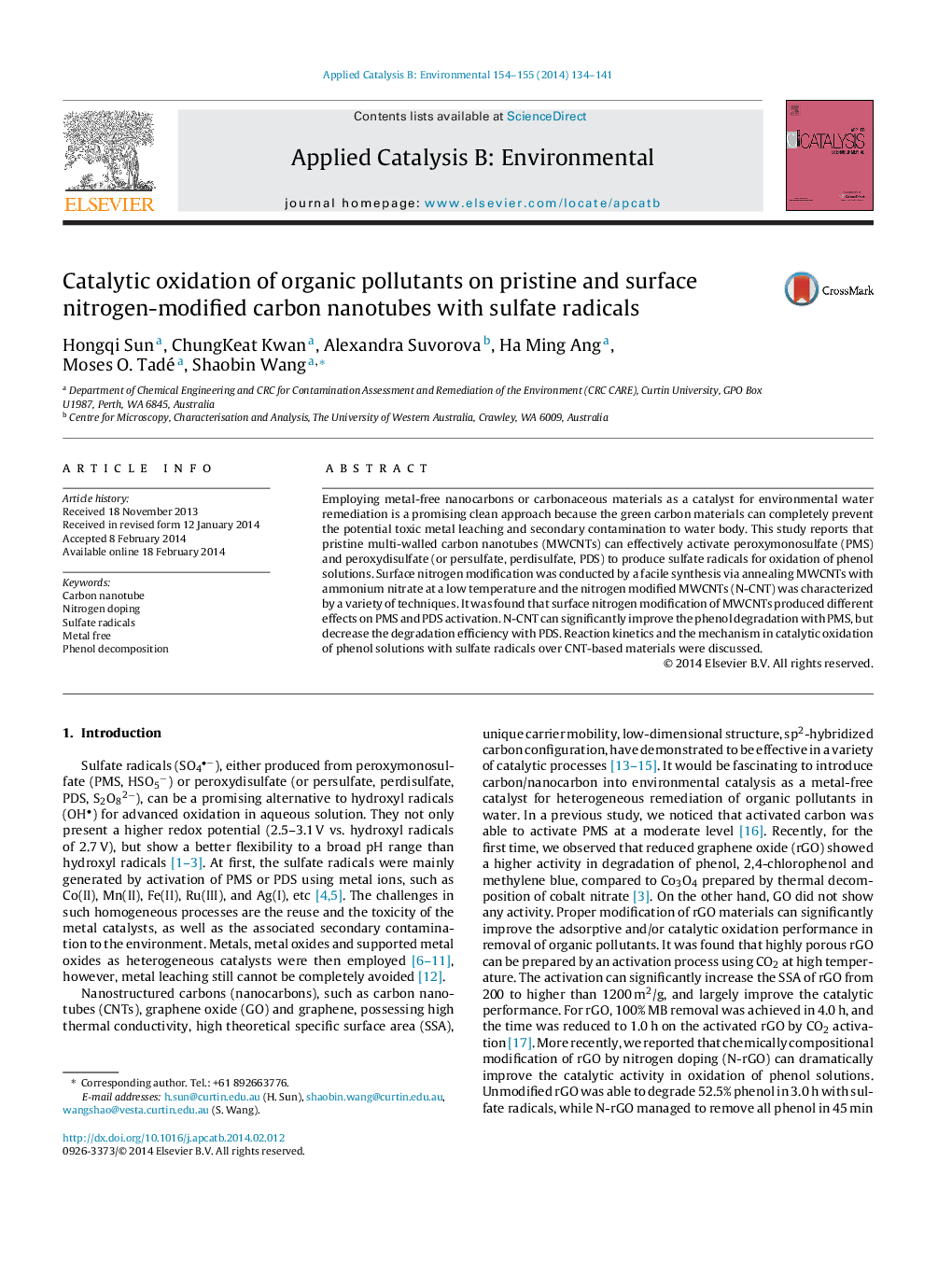| کد مقاله | کد نشریه | سال انتشار | مقاله انگلیسی | نسخه تمام متن |
|---|---|---|---|---|
| 45047 | 46395 | 2014 | 8 صفحه PDF | دانلود رایگان |
• Carbon nanotubes can generate SO4−
• from peroxymonosulfate and peroxydisulfate.
• Nitrogen doping increases the catalytic performance in activating peroxymonosulfate.
• Pristine and N-modified carbon nanotubes are green catalysts for organic decomposition.
Employing metal-free nanocarbons or carbonaceous materials as a catalyst for environmental water remediation is a promising clean approach because the green carbon materials can completely prevent the potential toxic metal leaching and secondary contamination to water body. This study reports that pristine multi-walled carbon nanotubes (MWCNTs) can effectively activate peroxymonosulfate (PMS) and peroxydisulfate (or persulfate, perdisulfate, PDS) to produce sulfate radicals for oxidation of phenol solutions. Surface nitrogen modification was conducted by a facile synthesis via annealing MWCNTs with ammonium nitrate at a low temperature and the nitrogen modified MWCNTs (N-CNT) was characterized by a variety of techniques. It was found that surface nitrogen modification of MWCNTs produced different effects on PMS and PDS activation. N-CNT can significantly improve the phenol degradation with PMS, but decrease the degradation efficiency with PDS. Reaction kinetics and the mechanism in catalytic oxidation of phenol solutions with sulfate radicals over CNT-based materials were discussed.
Figure optionsDownload as PowerPoint slide
Journal: Applied Catalysis B: Environmental - Volumes 154–155, July–August 2014, Pages 134–141
